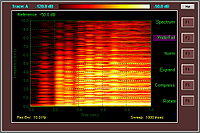
Photo from wikipedia
Abstract An international standard defining a common acoustic classification scheme for dwellings is under development by ISO TC43/SC2/WG29, based on the outcomes of the European project COST Action TU0901. The… Click to show full abstract
Abstract An international standard defining a common acoustic classification scheme for dwellings is under development by ISO TC43/SC2/WG29, based on the outcomes of the European project COST Action TU0901. The proposal offers an opportunity for countries to establish building acoustic requirements using a harmonized set of descriptors. This harmonized set considers the possibility of using impact sound insulation descriptors including the impact spectrum adaptation term CI or not. Furthermore, it also considers the possibility of using different frequency ranges for the impact spectrum adaptation term, CI50 and CI100. In order to evaluate the potential effect of such changes, it is necessary to provide translation equations between existing and proposed harmonized descriptors. The main objective of this paper is to provide, based on a statistical analysis of a large experimental data set, a translation equation for each pair (existing/proposed) of selected impact sound insulation descriptors. Additionally, the paper aims at investigating if the obtained translation equations are independent of the building type, so the same statistical analysis has been performed with two separated databases including either only heavy floors or only light floors. From the first results, it is concluded that the obtained translation equations are dependent on the building type when different assessment frequency range and rating methods are considered in both descriptors. In spite of this conclusion and in order to provide a tool for estimating the potential consequences of adopting a different impact sound insulation descriptor, the existing impact sound insulation national requirements have been translated into two proposed harmonized descriptors (L′nT,w and L′nT,50) using the translation equation obtained using the full data set, that is, not considering the building type. Additionally, the translated requirements have been aligned within the acoustic classification scheme, which is being developed by ISO TC43/SC2/WG29. The results show that, if the proposed common acoustic classification scheme is adopted, the existing requirements would lie, as expected, mainly within classes C and D, although, in some countries with more permissive requirements, the new built dwellings would be ranked class E or even class F. There is only one country where the requirements are such that the new build dwellings would be classified as B, concerning impact sound performance.
Journal Title: Applied Acoustics
Year Published: 2018
Link to full text (if available)
Share on Social Media: Sign Up to like & get
recommendations!